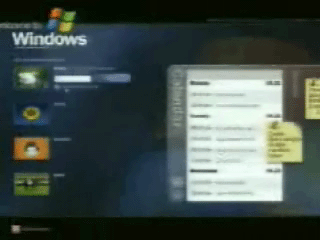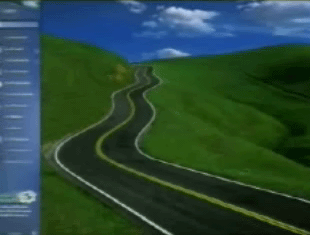| |
The Road to Windows "Longhorn"
What
we know
about
the next version of Windows
UPDATED:
My Longhorn preview has been updated with new
information from people in and close to Microsoft!
If you're a Net junkie like me, you've probably seen
screenshots that reportedly expose upcoming user
interfaces for the next two versions of Windows
(code-named "Longhorn" and "Blackcomb"). You might have
heard of internal alpha builds of either OS, and maybe,
just maybe, you've seen the infamous Blackcomb movie
that's making the rounds as well. I've spent the past
few months investigating all of these things, and after
speaking with several Microsofties and uncovering the
truth behind the wild stuff that's available on the
Internet, I thought I'd provide a little heads-up on
what's really going on with the next version of Windows.
Chances are, everything
you know is wrong.
But I do know this: As of this date--mid-January
2002--every single screenshot you've seen that purports
to be Longhorn or Blackcomb is either fake or actually
shows something other than those OSes. Every single one.
And there are no builds of Blackcomb floating around,
internal or otherwise.
Microsoft is indeed
working on future versions of Windows and accompanying
technologies such as Digital Media 9 ("Corona"), "Mira,"
and "Freestyle" (see my related showcase about
Freestyle and Mira).
These technologies will all ship separately, while other
technologies (such as the next version of Windows Movie
Maker and DVD burning capabilities) won't see the light
of day until Longhorn ships in 2003. There are so many
groups working on Windows-related technologies these
days, in fact, that it's hard to keep up.
So let's start with an
obvious target: That intriguing "Blackcomb" video and
the screenshot fakes that appeared as a result.
UPDATED!
The "Blackcomb" Video
The Blackcomb
rumors started with Microsoft's annual Financial Analysts Meeting, which was
held in late July 2001. During the meeting, many Microsoft executives, including
Bill Gates and Steve Ballmer, gave presentation-heavy speeches, usually
punctuated by product demonstrations given by senior Microsoft product
managers. During MSN chief Yusuf Mehdi's talk, Steven Guggenheimer demonstrated
how a future MSN "Service Innovation" could integrate with the Windows shell.
The version of Windows that was used included a post-XP prototype user interface
that included a slightly modified Welcome screen and a Start Panel that occupies
the rightmost third of the screen. Windows enthusiast sites continue to
circulate movies of the demo to this day, claiming that it shows Blackcomb
(this, despite the fact that Longhorn had been revealed as the next Windows
version just days earlier).
But it's not Blackcomb, of course. Instead, it's
just a prototype of a post-XP user interface, used solely to show how a future
Windows will supply more hooks into the UI so that other products can integrate
themselves where appropriate. MSN clearly has plans to do this.
Let's check out Guggenheimer's talk, punctuated by
shots showing how the screen looked at the time.
This discussion is taken directly from the official transcript of the speech.
 GUGGENHEIMER:
We'll take a little walk into the future, not for too long. One of the things
that I think the Windows guys have done a tremendous job with in the current
release with XP is sort of creating hooks for services, enabling services to
blend nicely with the PC. If you think about it, though, we still have a ways to
go. If you look at, for example, the cell phone, or the television set-top box
today, when you buy those devices it's a natural that services are a part of it.
And if you want to get to the point where subscription services are available to
customers based on Web things, you need to have the services be a natural
extension. So I'm going to log in here, a multi-user family log-in. And one of
the things we think about is, the Windows guys have done a really good job of
enabling services, I assume they'll take another step forward. GUGGENHEIMER:
We'll take a little walk into the future, not for too long. One of the things
that I think the Windows guys have done a tremendous job with in the current
release with XP is sort of creating hooks for services, enabling services to
blend nicely with the PC. If you think about it, though, we still have a ways to
go. If you look at, for example, the cell phone, or the television set-top box
today, when you buy those devices it's a natural that services are a part of it.
And if you want to get to the point where subscription services are available to
customers based on Web things, you need to have the services be a natural
extension. So I'm going to log in here, a multi-user family log-in. And one of
the things we think about is, the Windows guys have done a really good job of
enabling services, I assume they'll take another step forward.
Notice the MSN Calendar widget and
Outlook Notes "stickies" on the Welcome screen. Clearly, these are just prototype examples,
because it wouldn't make sense for a single user's calendar or Outlook Notes to
be present on the logon screen for a multi-user PC. But again, the point here
isn't to show off the next version of Windows. Instead, Guggenheimer is simply
showing how the MSN team could take advantage of the programming hooks in
Windows going forward.
 GUGGENHEIMER:
So if I look at the start menu today, there's a bunch of places there where
we can hook in. Imagine the future as a user, being able to have access to
services and local capabilities sort of seamlessly, so I don't have to go and do
something different, for example, if I want to look at my finances. My finances
can be in line with my music or my videos or my pictures, the things we do
today. And with customization I might be able to take a symbol, stick it right
there in line, think about my contacts in terms of buddy list today, again,
that's sort a separate entity today, and when we can bring it in and make it
cleaner, then I can go to my contacts. I might anchor this, I might tear it off
and bring it out like we do with Messenger today, or some of the other messaging
services. GUGGENHEIMER:
So if I look at the start menu today, there's a bunch of places there where
we can hook in. Imagine the future as a user, being able to have access to
services and local capabilities sort of seamlessly, so I don't have to go and do
something different, for example, if I want to look at my finances. My finances
can be in line with my music or my videos or my pictures, the things we do
today. And with customization I might be able to take a symbol, stick it right
there in line, think about my contacts in terms of buddy list today, again,
that's sort a separate entity today, and when we can bring it in and make it
cleaner, then I can go to my contacts. I might anchor this, I might tear it off
and bring it out like we do with Messenger today, or some of the other messaging
services.
He says, "imagine the future as a user, being able to have access to services and local capabilities ...
seamlessly." In other words, the Start menu--or something like it--will expand from its current PC-centric view
to one that incorporates Web services. You'll have access to My Photos (locally)
and the MSN Photos site as well, if you want.
|

